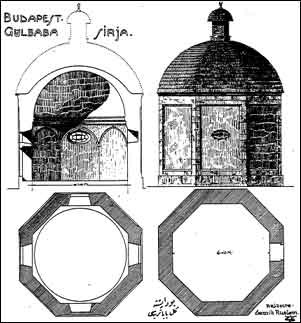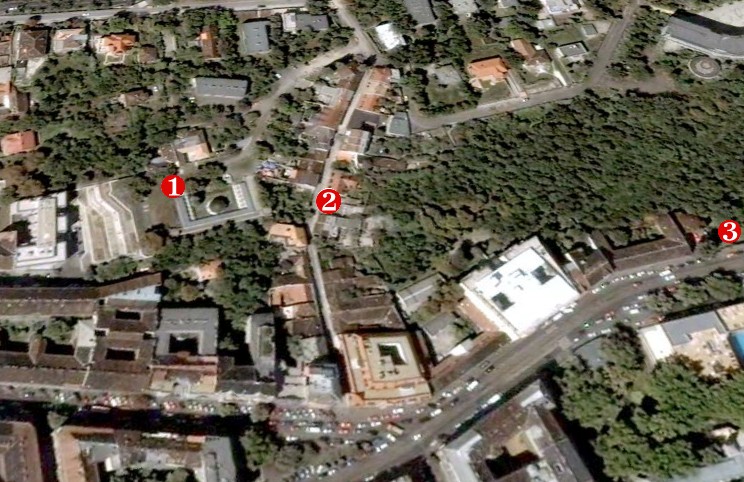| Gül Baba Tomb (Gül Baba türbeje) Gül Baba Street (Gül Baba utca) Die Gül-Baba-Straße ist eine schmale, steile Straße, die zu dem Hügel hinaufführt, auf dem sich das gleichnamige Grabmal befindet (Mecset utca 14). Gül Baba kam 1541 mit der türkischen Armee nach Buda, starb jedoch bei der Siegesfeier in einer Kirche und wurde hier beigesetzt. Das Grab wurde 1885 und nochmals 1962 durch die Türkei renoviert. Gül Baba Street is small, steep street leading up to the hill where Gül Baba Tomb overlooks the city. Gül Baba came to Buda in 1541 with the Turkish army but died during the thanksgiving for the victory. His tomb was renovated in 1885 and, again, in 1962 by the Turkish government. Today, it is a museum. |
||||||||
 |
||||||||
| Luftaufnahme / Aerial View
1: Das Grabmal auf dem Hügel / Gül Baba Tomb on the hill 2: Die Gül-Baba-Straße / Gül Baba Street 3: Die türkische Pulver-Mühle / Turkish Powder Mill Die Strassennamen dieses Viertels zeugen besonders gut von der türkischen Vergangenheit: Török ut. (Türkenstr.), Meczet ut. (Moschee-Str.), Turban ut., Gül Baba ut. Street names like Török ut., Meczet ut., Turban ut., and Gül Baba ut., all in close vicinity, clearly demonstrate the Turkish past of this quarter. |
 |
|||||||